Clematis "Red Star": description and rules of cultivation
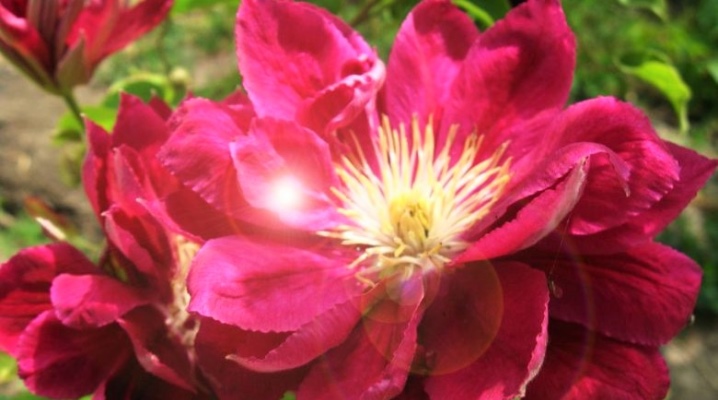
Over the years, breeders have bred a wide variety of clematis varieties that amaze with the splendor of their flowers. They become a real decoration of any garden, causing admiration for their bright colors.

Description of the variety
Clematis "Red Star" came to us from the Land of the Rising Sun. It was there that he was bred. And although the conditions in Japan are different from Russian ones, the hybrid has successfully taken root in the areas of our gardeners due to its unpretentiousness and excellent decorative effect.
"Red Star" is a perennial of the buttercup family. It is a liana, the length of which reaches 2 m. The opposite leaves have a bright green color. Their shape can be either simple or complex.
Twice a year - from May to June and from September to October - the plant is covered with large double or semi-double flowers with a diameter of about 14 cm. Their shade ranges from light red to crimson, which gave the variety its name (translated as "Red Star").

A distinctive feature is the presence of a pink or white dividing strip on each petal. The petals are pointed, slightly curved downward.
In the middle of the flower there is a whole bunch of stamens. Their light beige filaments end in bright yellow anthers, exuding a delicate sweetish scent that attracts bees and butterflies.
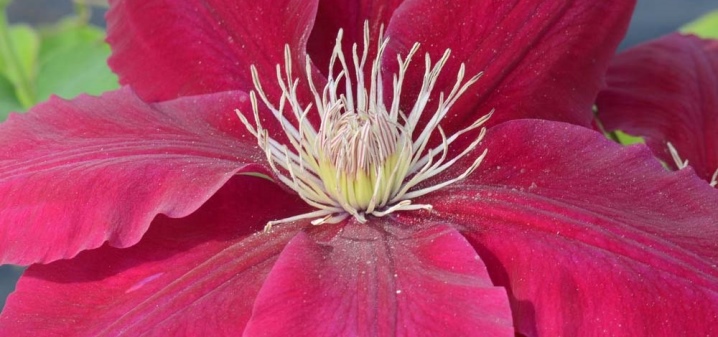
As the liana grows, it begins to cling with petioles to everything that comes across in its path. In this regard, gardeners place supports, nets, decorative arches next to the plant, or simply plant clematis near a mesh-type fence, which will also serve as support for the branches.
The hybrid is not afraid of frost. It will not freeze out, even if the temperature drops to -35 ° C in winter. This allows clematis to be grown in many climatic zones.
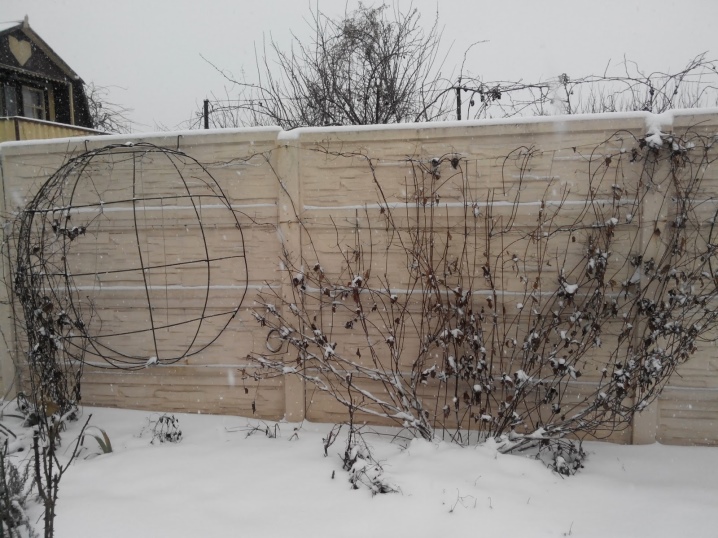
Trimming group
"Red Star", like many other Japanese varieties, belongs to the second group of pruning, which involves the preservation of branches formed in the past year. Don't overdo thinning the plant. In the first year of life, it is enough to pinch the top and cut off the first flowers that have appeared.
Pinching will be a powerful incentive for clematis to become bushy.
Even before the onset of the first frost, it is necessary to prune. The height of the main shoot is kept at the level of 25-35 cm. The remaining branches are cut off. This measure is necessary. As a result, the plant will produce lush young growth next year. Dry or damaged branches must be removed every year.
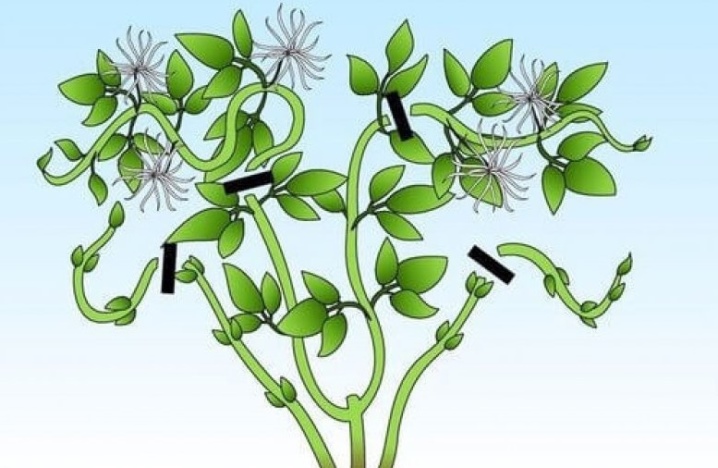
As a result of secondary pruning, the shoots are shortened so that their length is 140-150 cm. At least 12 knots should remain on the branch. Preserving last year's shoots is essential for the flowering process. It is recommended to thin out dense bushes, leaving 14 vines in it. If you follow these tips, then the next year after such pruning, the plant will be lush and will delight you with abundant flowering.
Landing features
Choosing a future place for a plant is a responsible business. If the necessary conditions are not supported, then this will negatively affect the condition of the clematis, and the owner will have to solve many related problems.
Despite the fact that the plant loves the sun, direct rays are undesirable. Otherwise, the petals will burn out and lose their brightness. Drafts and open spaces are also undesirable, where gusts of wind can break delicate branches.
Do not plant clematis near the fence, especially if it is metal. It inhibits the overgrowth process. In addition, the metal becomes very hot when exposed to sunlight, which causes flowers and leaves to burn.
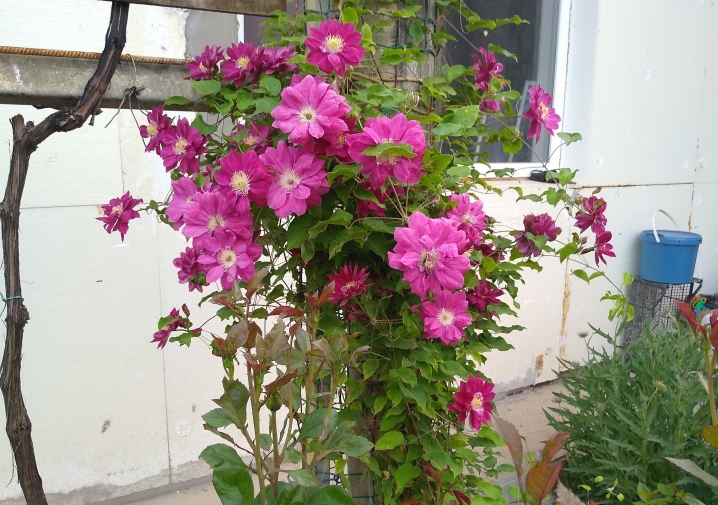
And also you can not place the plant close to the house. Rainwater, rolling down from the roof, will flood it, and this will lead to the fact that the roots will begin to rot and the plant may die.
The easiest way is to plant a plant that is 1-2 years old on your garden plot. If you get it from a specialist store, take a close look at the root system. It should consist of at least three well-developed roots, the length of which is about 10 cm. If you notice swelling, thickening, other signs of disease, it is better to refuse such a purchase. The seedling should have two strong shoots and 2-3 well-developed buds.
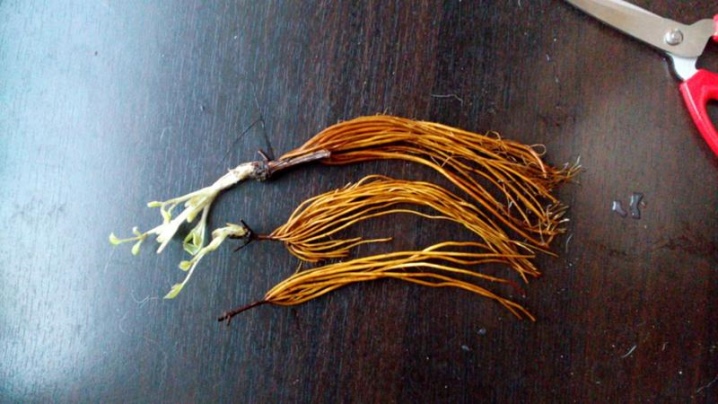
If the roots of clematis are not covered with earth and are in an open state, then before planting the plant in the ground, place it in warm water for 2 hours, in which you dissolve a special composition that promotes the formation of roots.
"Red Star" is planted in open ground in autumn or spring. It all depends on the climatic conditions. If the climate is unstable, then the optimal landing time is spring. In autumn, the plant will not be able to properly adapt, strengthen, and with the onset of the first frost it may die.

Consider the stages of planting.
- A square hole is dug 50 cm long and wide.If you plan to plant several clematis, the distance between them should be 1.5 m.
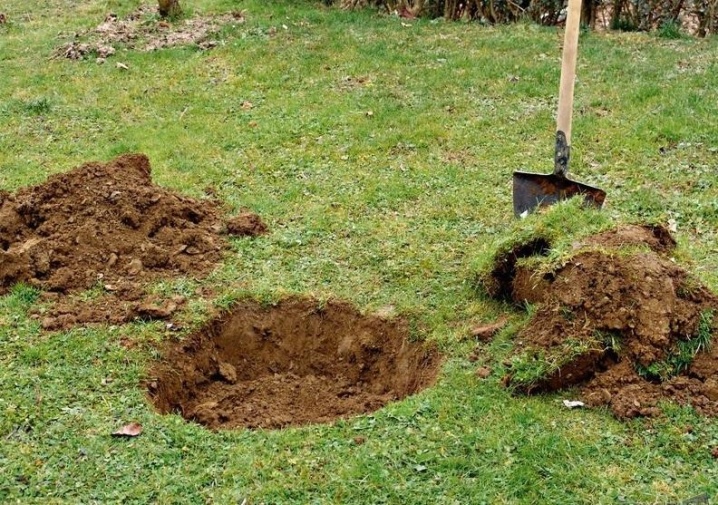
- A drainage layer is poured into the hole. They can be pebbles, expanded clay, small fragments of bricks. Layer height 15 cm.
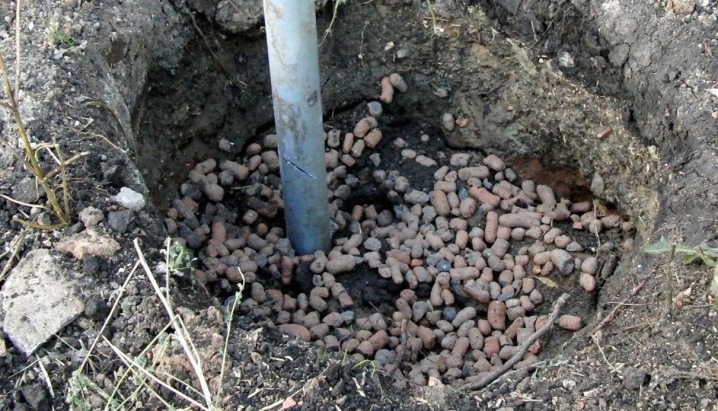
- The soil is poured into a mound, which contains leaf compost, garden soil, sand, rotted manure. You can also prepare a mixture consisting of the following components: sod land - 1-2 parts, sand - 1 part, peat - 1 part, humus - 1 part, ash - 0.5 l, complex fertilizer - 120 g.
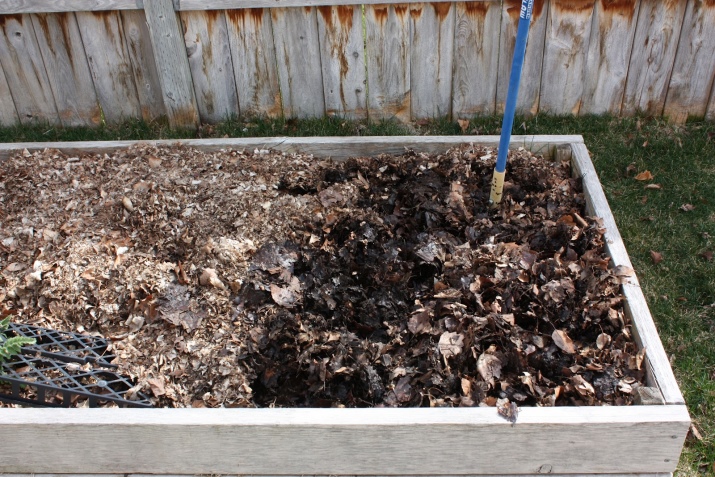
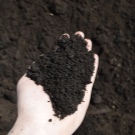
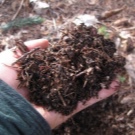

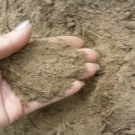
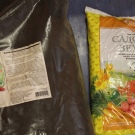
- The seedling is set on the top of the "nutritious" mound. The roots must be carefully straightened out without damaging them.
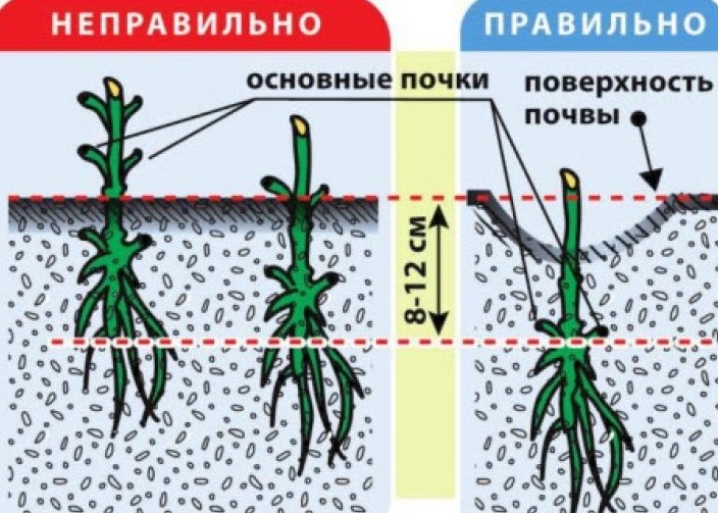
- Clematis is sprinkled with earth so as to deepen the lowest bud by 10 cm.
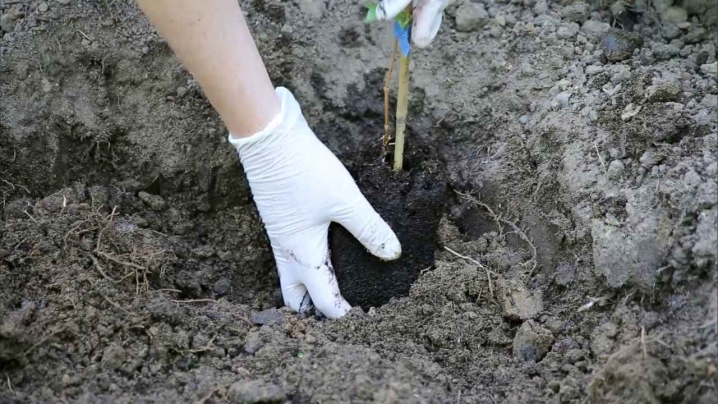
- The hole is covered with soil, but not completely. It is necessary that it be slightly deepened, by about 6-8 cm.
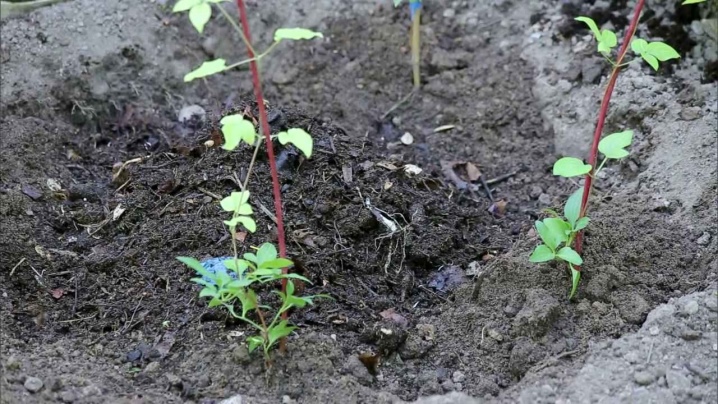
- The soil is compacted and watered abundantly - 10-12 liters.
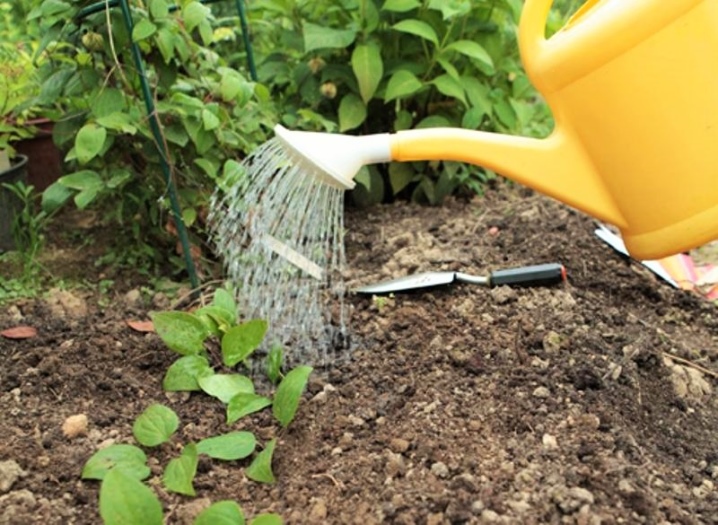
The planted bush is shaded if necessary. For this, a plant is suitable, in which the roots are located in the upper layer of the soil and do not interfere with clematis.
Care Tips
Clematis is watered regularly, abundantly. At the same time, it is important to prevent stagnation of water, which can cause rotting of the roots. In dry times, the plant needs to be watered several times a week. One bush requires about one bucket of water at a time. If your plant lacks moisture, it will let you know about it: flowers become smaller in size, lose brightness, quickly fly around.
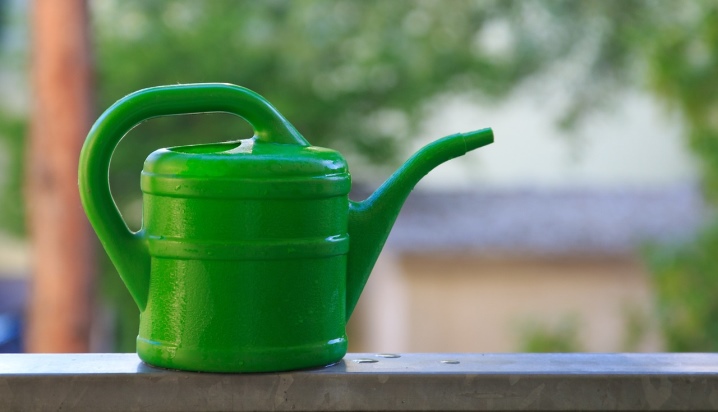
Clematis needs loosening. Thus, the roots receive the air they need. Plus it provides better water flow. In order to retain moisture, a layer of sawdust is used, which is poured in the near-stem radius.
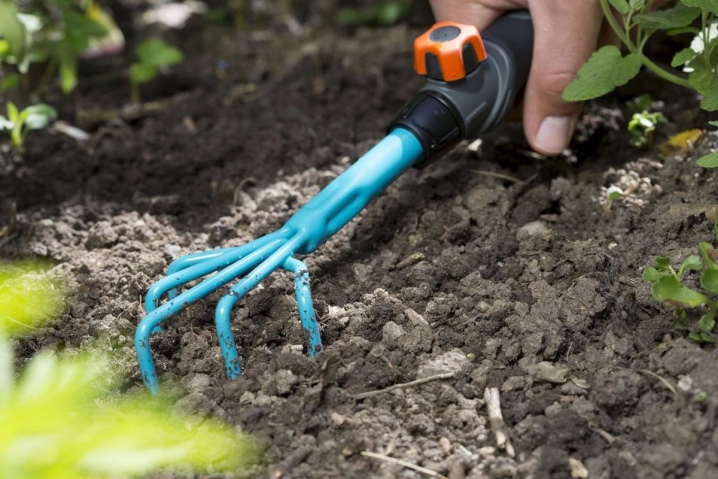
In order for the plant to bloom for a long time and abundantly, it needs feeding. In the spring, nitrogen-containing substances are introduced, during the period of bud formation - containing potassium in their composition. Phosphorus-potassium dressing is done in the fall.
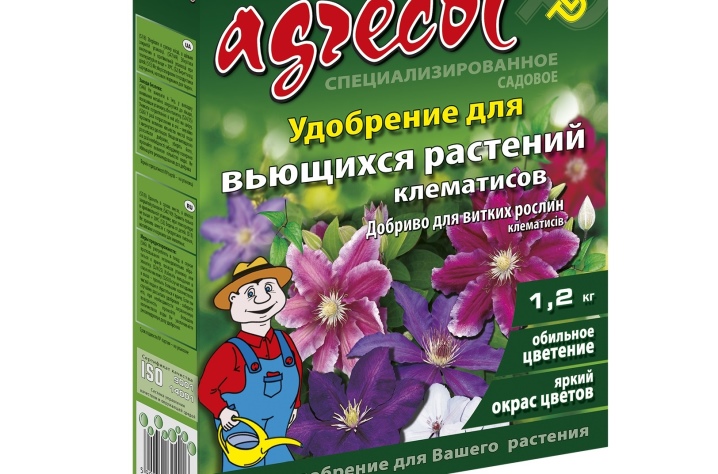
When a plant is in bloom, it doesn't need fertilizer.
Preparation for winter is an important step in care. Until the first frost occurs, it is necessary to hilling. The trunks of the shoots are covered with loose earth by 15 cm.You can add wood ash so that clematis does not get sick.
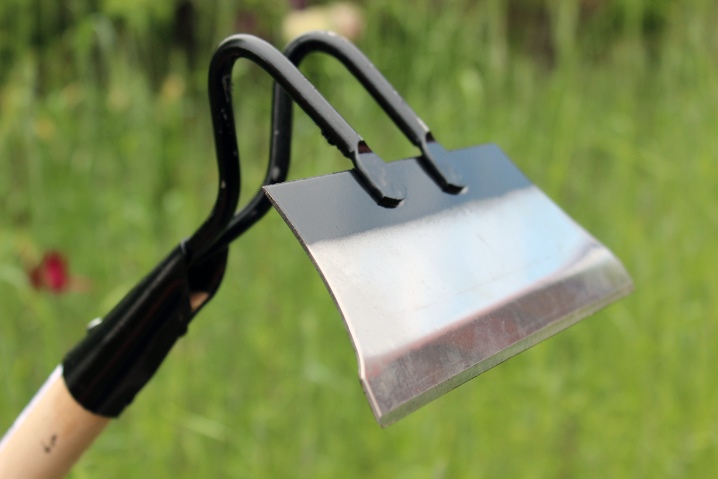
As soon as the ambient temperature begins to drop to -5 ° C, the "Red Star" is covered. The liana must be carefully twisted in the form of a ring, fixed on the earth's surface with special brackets and covered with a box made of wood. The top of the box can be wrapped in thick burlap, or covered with spruce branches. After the first snow falls, cover the shelter with it.
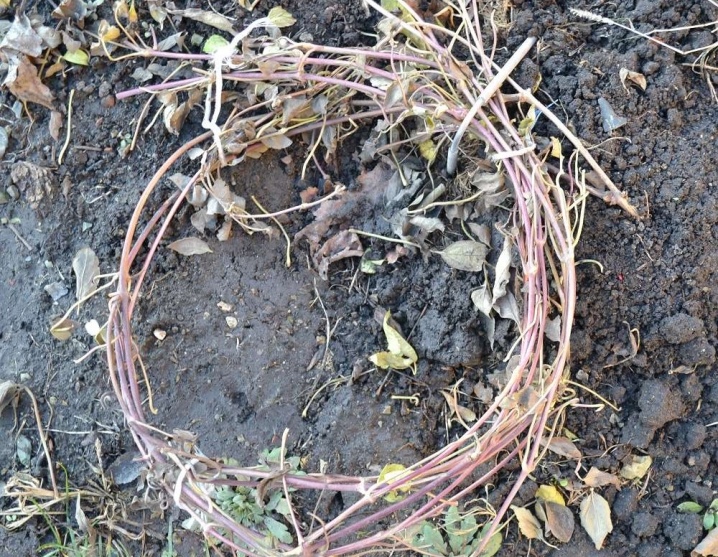
Reproduction
The easiest way to reproduce is to divide the bush. The procedure can be carried out with a plant that is 5-7 years old. The optimal time for this is early spring. First, all shoots must be pruned, leaving 2-4 buds on them. Further, the entire bush is dug up along with the roots and a lump of earth. It is important to do everything carefully without damaging the root system. With a sharp, sterile knife, cut the bush in the center so that each part has a good root and growth bud. The resulting parts can be planted in the soil.

Seed propagation of "Red Star" clematis is ineffective. The process is too long. Due to the fact that this variety is a hybrid, clematis grown from seeds may not show such spectacular decorative properties that are inherent in the parent plant.
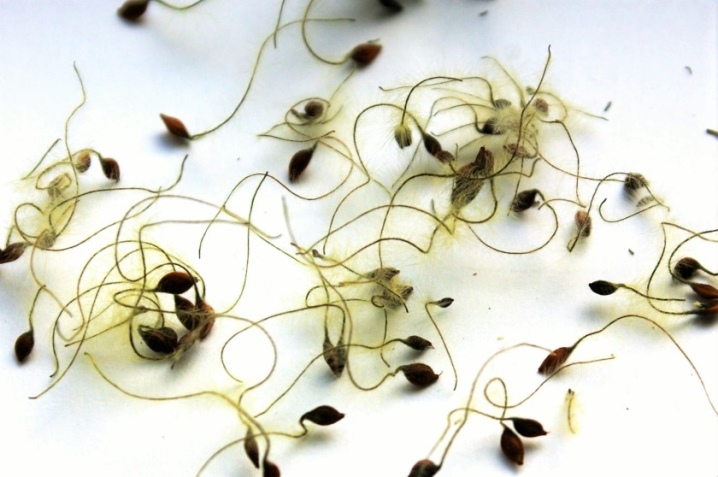
Another way is grafting. It is suitable if the plant is 5 years old. Cuttings are cut at an acute angle in the fall. They should have 2 kidneys each. Next, the cuttings are placed in nutrient soil. Such workpieces are removed to a cool place where the temperature does not exceed 0 ° C. Soil moisture is kept under control. At the end of winter, cuttings will need light and warmth. If the root system has begun to form, then the first leaves will appear on the blanks in March.
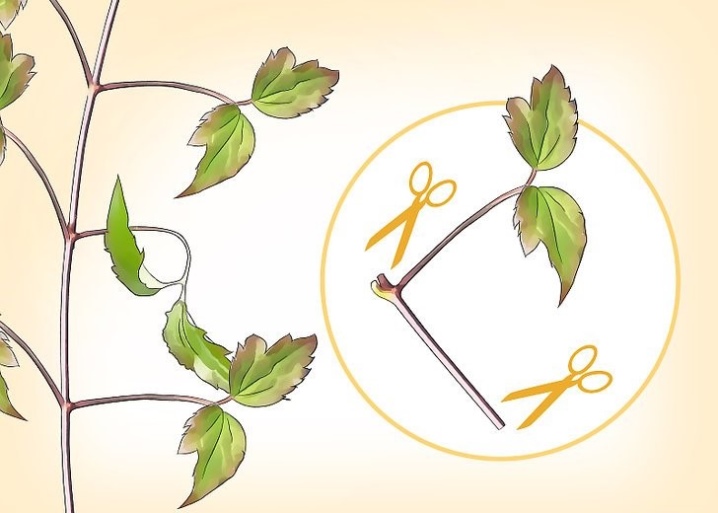
The plant is planted in open ground when the air outside warms up to + 15 ° C.
A good result is obtained by reproduction by the method of air vents. All leaves are removed from a healthy shoot. Next to the main bush, a trench is dug into which a blank branch is placed. It is partially covered with earth so that the upper part is on the surface. Next, you need to thoroughly compact the soil, shed, mulch. The procedure takes place in October. The rooted shoot is transplanted to a permanent place in the fall after a year.
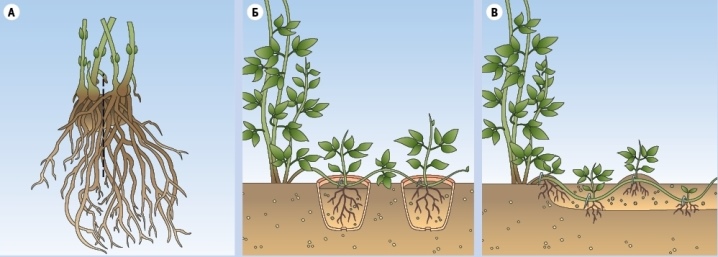
Diseases and pests
If brown spots appear on the leaves, it means that clematis has been attacked by gray rot, which Fundazol will help to cope with. Foliage can also be affected by ascochitis. In this case, dark spots appear, drying out over time and forming multiple holes on the leaf plates.
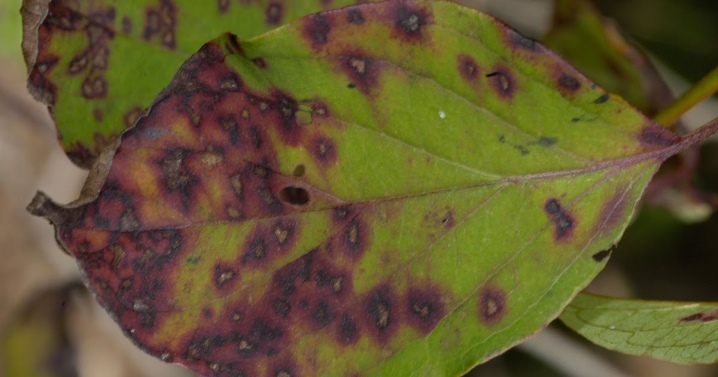
You can get rid of this with the help of copper sulfate. The leaves are treated with its solution.
If a white sticky bloom appears on young leaves and stems, this indicates the presence of powdery mildew. Damaged branches must be cut and burned, and the plant must be treated with preparations containing copper.
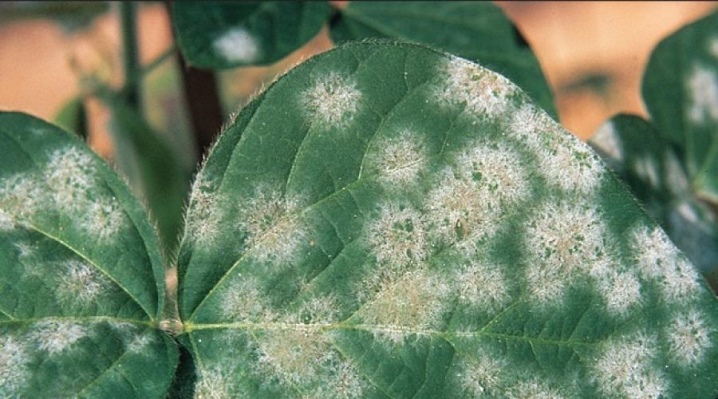
Red bumps on the leaves are an alarming signal. It is rust. It is necessary to remove the affected foliage, and spray the bush with Bordeaux liquid.
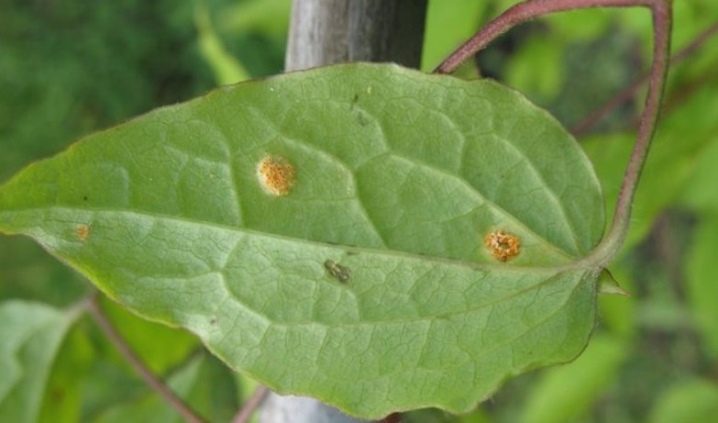
Clematis can be damaged by various insects: nematodes, aphids, caterpillars, slugs. To combat it, purchase special insecticides sold at any gardening store.
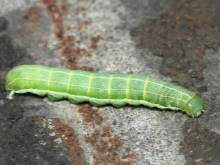
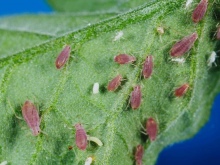
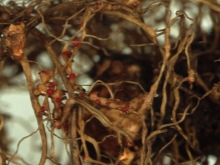
Examples in landscape design
Red Star is incredibly beautiful. Most often it is used to plant greenery on vertical structures, gazebos, arches, stair railings.
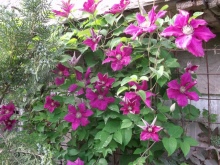
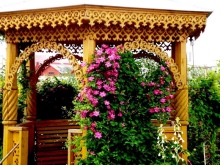
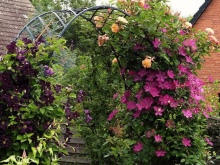
It is also good as a hedge.
A successful combination with a plant is given by roses, barberry, hydrangea. Clematis looks harmonious with low shrubs: barberry, viburnum, conifers. We can say that Red Star is universal.
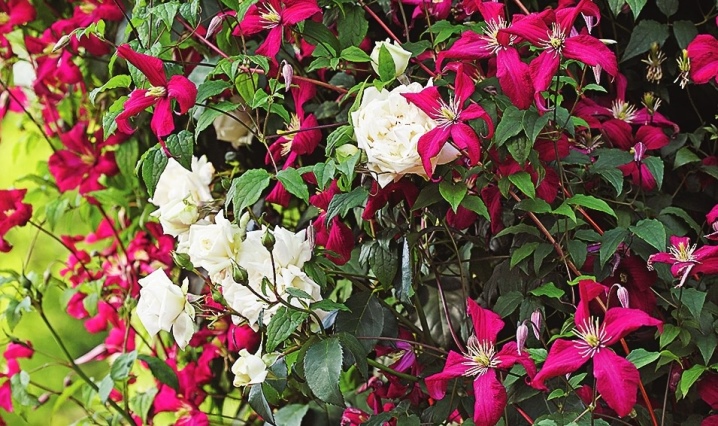
More about clematis "Red Star", see the video below.







































































































The comment was sent successfully.